In 1991, a new programming language called Python was devised. Decades later, having overtaken most of its rivals, the invention is already extensively used by tech companies around the globe. While some languages are stagnating or in decline, Python’s popularity is going up. Moreover, the TIOBE programming community index shows now that Python holds the highest position since the start of the index in 2001. People search for information about it on Google ever more often and they actually manage to find the facts that introduce benefits of Python over other languages. So, what drives its success?
What is the Python programming language?
Python is one of the most popular and fastest-growing programming languages. Inherently, it is interpreted, high-level, general-purpose, and object-oriented scripting language, which means the following:
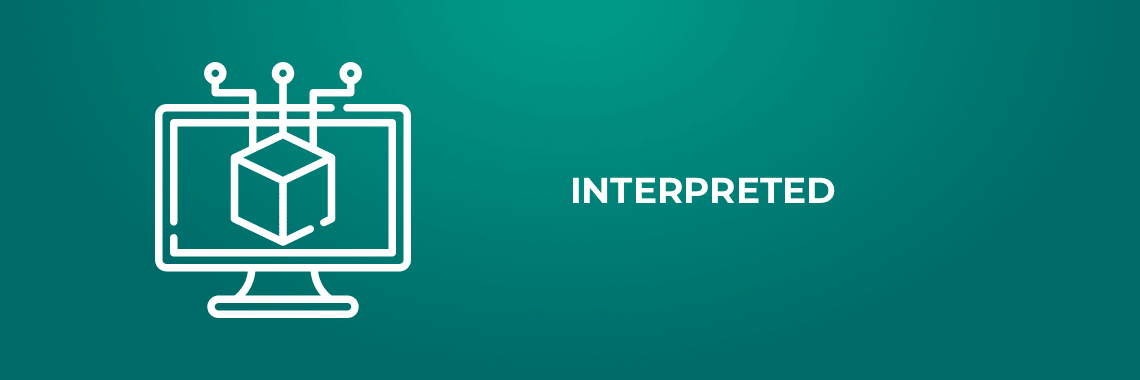
Interpreted - an interpreter processes the source file at runtime, it reads the lines of code one by one and performs what is said. Similarly to Perl and PHP, Python does not require that you compile your program before executing it. So, you do not have to invoke a compiler. Instead of running the compiler that helps turn source files into compiled class files, you simply run a .py file. Python byte code compilation is automatic and entirely implicit.
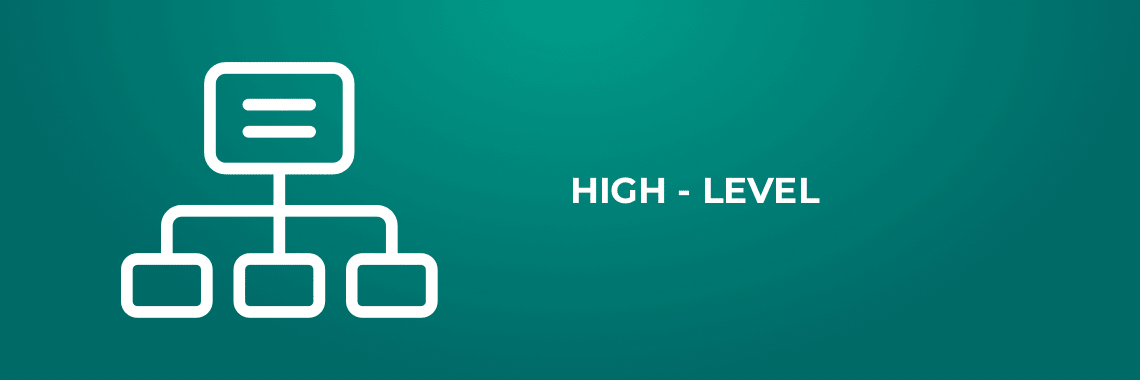
High-level - Python relies on easy-to-read structures that are later translated into a low-level language, the original code that is run on a computer’s central processing unit (CPU). A high-level language is intended to be used by a programmer and the written code is further interpreted into a low-level language. Like C++ or Java, before running, Python has to be processed. This enables Python’s portability — it can run on different kinds of computers with nearly no modifications.
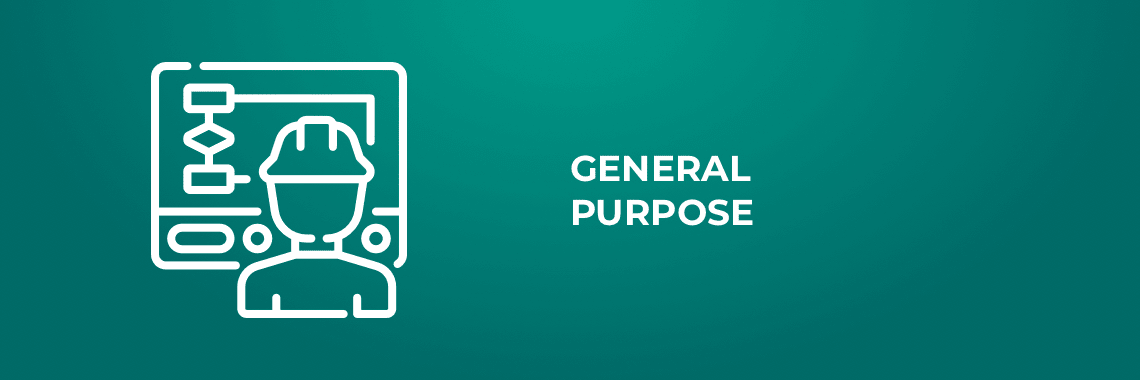
General-purpose - Python can be used for nearly everything. It is applicable to almost every field for a variety of tasks. Be it the execution of such short-term tasks as software testing or long-term product development that involves roadmap planning, Python works well for them all, it is applicable all over the map. Its roles are unlimited. It is popular not only among software engineers, but also among specialists in other fields: mathematics, data analysis, science, accounting, and network engineering. Likewise, Python cliques with young people because it’s a very beginner-friendly scripting language.
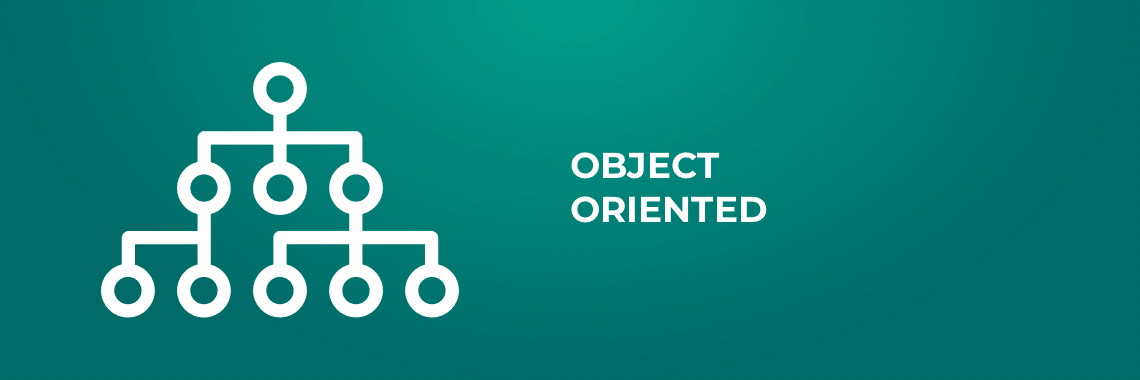
Object-oriented - this programming paradigm gives an overall orientation towards scripting and powerful code structuring. This object-oriented approach allows thinking of problems in terms of classes and objects. Then, objects are composed in such a way to make up complex computer programs. Beside the object-oriented programming, Python also supports a procedural paradigm. With OOP being only one of the options, you can make Python programming more advanced by going for an object-oriented programming approach. Developers can create reusable patterns of code thus curtailing redundancy in development projects.
Where Python language is used
There is a vast variety of Python use cases across industries. Of course, the first thing that comes up when one thinks about the most common ways in which Python is employed is for building web, mobile, and desktop applications, as well as for testing them. But Python is a language that serves a multiplicity of purposes. Basically, these are the areas of use Python is perfect for:
- Web app development
- Data science
- Scripting
- Database programming
- Quick prototyping
Python is good for all forms of programming, which makes its user base grow rapidly. Cross-platform shell scripting, quick automation, simple web development, data analysis and visualization, AI and ML are some of the examples.
Often, specialists use Python to better perform a variety of tasks in different disciplines. Better performance, among others, may be achieved with the help of automation. Finance, insurance, and marketing are the primary fields, in which people face the necessity to do tasks that are repetitive and boring: viewing, copying, renaming, and uploading files to a server, downloading websites or parsing data. Instead, a programmer can write a script in Python and automate it all.
Moreover, you should not necessarily be a software developer to use Python. The language allows facilitating data analysis and visualization. It has a rich ecosystem comprising efficient libraries for data processing and therefore assisting data scientists in performing complex numeric computing operations.
Advantages of the Python programming language
Not for nothing, the biggest companies in the world use Python. It is taken advantage of by Pixar to produce films, by Google to crawl pages, by Netflix to deliver content, and by Spotify to recommend songs. The language is full of benefits and there are some good reasons to love it:
Simplicity. Python’s straightforward and simple syntax is something that makes beginners want to learn this scripting language. From some perspective, it may seem natural and pre-determined that Python can turn into the lingua franca of coding, manifesting all the rest of its opponents obsolete. Its code is easy to comprehend, share, and maintain. There is no verbosity and the language is easy to learn.
A powerful toolbox. Inherently, Python programs are text files containing instructions for the interpreter and are written in a text editor or IDE. IDEs are full-featured and offer in-built tools like syntax checkers, debuggers and code browsers, text editors do not normally include IDE features but they can be customized. Python also has a huge array of third-party packages, libraries, and frameworks that facilitate the development process. These optimization capabilities thus make Python great for large-scale projects.
Development speed. We mean business speed here and the time-to-market metric. Python is a dynamic scripting language, so it isn’t intended for writing applications from scratch but it’s primarily intended for plugging together components. Components are designed to be reusable while the interfaces between components and scripts are well-defined. It all accelerates the speed of software development with Python making the language highly concise and productive.
Flexibility. Although Python puts emphasis on code simplicity and readability rather than flexibility, the language still has it. Python is usable across different projects. It allows developers to choose between object-oriented and procedural programming modes. Python is flexible in data type, too. There are 5 of them: Number, String, List, Tuple, and Dictionary and every sub-data type corresponds to one of these root types. As a result, the exploratory data analysis becomes easier to conduct due to Python’s flexibility.
Portability. Python is designed to be portable. Its programs are supported on any modern computer OS. Owing to the high-level nature of the language, Python script is interpreted, so it can be written for further interpretation equally well on Linux, Windows, Mac OS, and UNIX without demanding for adjustments. Python programs also allow implementing portable GUIs.
A strong community. Python has a rapidly growing user base and actually is representative of what a strong community is. There are thousands of contributors to Python’s powerful toolbox — Pythonists. There are already almost 200,000 custom-built software packages user-uploaded to an online repository. All it implies that the great supportive community is both the reason for and the consequence of the language’s being in demand.
Python and other programming languages
The fact that Python has a reputation of a programmer-friendly language that is favored by developers is undoubted but still, every now and then, Python is compared to other programming languages, including Java, C#, PHP, and Ruby on Rails. The comparison is valid, however, when performance, functionality and all other adequate metrics of the pair under discussion are considered.
Python vs Java
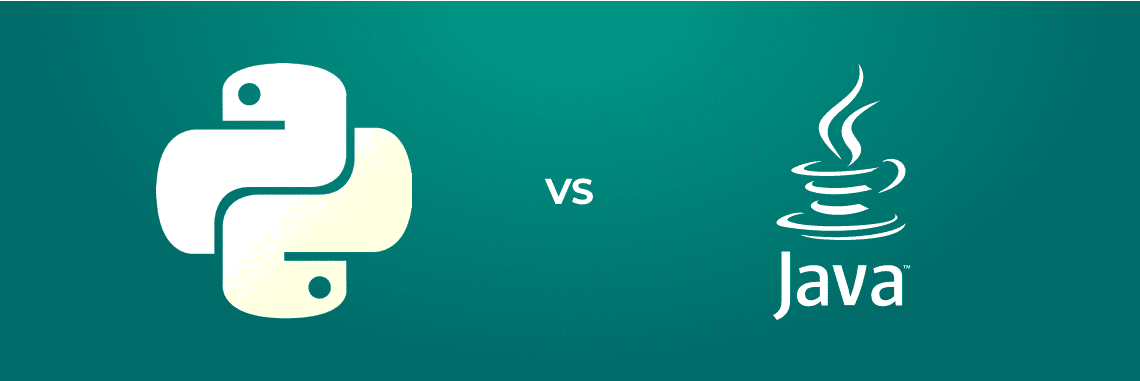
On the said TIOBE index, Java ranks the highest. It has established itself as the most commonly used language for building web applications. Java developers can choose the package they need from a wide variety of libraries, yet Python can even score over Java in terms of developers’ support. However, both languages are well-known as a general-purpose language. Java and Python serve equally great the purpose of completing essentially different software development tasks. This is what they share.
While their commonalities are uniform, their differences are a spectrum. To begin with, Python is interpreted and Java is compiled, meaning that the potential errors occur at runtime and compile-time respectively. Java is an official language for building Android apps. Alternatively, for Python, mobile app development is not a priority, to say the least. A library called Kivy warrants that but the process of development remains troublesome. Due to its interpretability, Python is a more productive programming language than Java in which everything must be explicitly declared. Unnecessary verbosity is inherent in Java and for performing the same task, there will always be fewer lines of code in Python than in Java. Finally, Python provides a more intuitive learning experience. Still, this does not scare away beginners who choose to learn Java with its extra coding anyway.
Python vs C# performance and functionality comparison
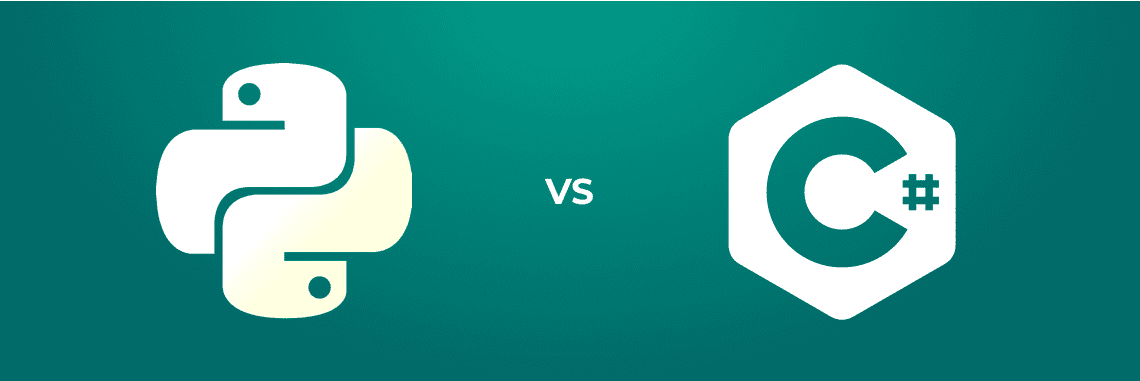
First thing, we will start with the shared characteristics. Python and C# are comparable languages as they provide simplicity and other great enough benefits. They both are object-oriented middle-level programming languages, and unlike others, these two provide full support for this type of programming, so that the code is well-structured. They both are general-purpose, so they can be used to create desktop, mobile, and cloud-based applications, enterprise software, and of course web apps. They both are a good choice for web development. C# however is most focused on Windows desktop app and web development. The language created by Microsoft is predictably best fit for developing Windows products using its .NET framework and it is expected to be continually given attention and kept relevant for the modern world.
One of the biggest dissimilarities lies in the fact that code written in C# is in steps compiled to native code. And the compilation is difficult. In turn, Python is first compiled to byte code and then interpreted by the interpreter of the respective OS. This is a distinctive feature of Python as a scripting language — an explicit compilation stage is skipped while flexibility and ease of portability are acquired instead. The learning curve for C# and Python is also slightly different. For C#, it is relatively low, but not compared to Python, which is even simpler to learn, especially for those who are brand new to the field. C# is a better choice for those with moderate to advanced experience with writing code.
Python vs PHP
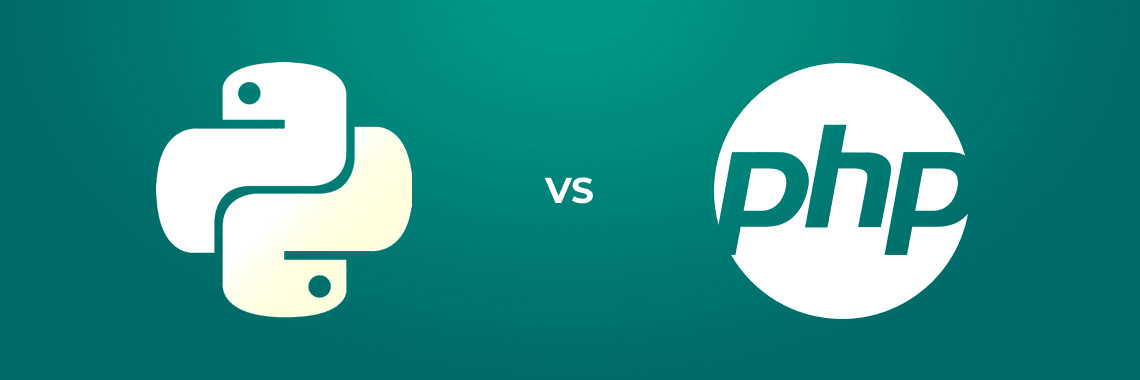
The technique this pair of languages is built upon is server-side scripting. This means that they are best equipped for the backend development of web applications. We have mentioned before the Python’s powerful toolbox. PHP also has some well-designed web development frameworks to offer, like Lavarel and Symfony. However, Python’s libraries are more unified and better-developed. Both are high-level, interpreted, and object-oriented. Thus, PHP can be interpreted into native code following Python’s pattern. Yet, there is a difference in how object-oriented programming works for the two in reality. PHP’s OOP is more chaotic but aims to become better structured over time. Another stumbling point is syntax. Its simplicity is Python’s highest priority. PHP’s syntax is rather similar to C-type languages, so it is more complex and perplexing. Consequently, a higher learning curve of PHP makes it less alluring for beginners. Mastering basics, OOP with PHP, design patterns, and frameworks is the necessary minimum to get started, but the difficulties one may encounter, especially when learning frameworks, tell against PHP.
Besides, there’s a tendency today for switching from PHP, which is in some kind of stagnation, to Python. The growing number of programmers abandon PHP in favor of Python due to the convincing benefits of the latter.
Differences between Python and Ruby
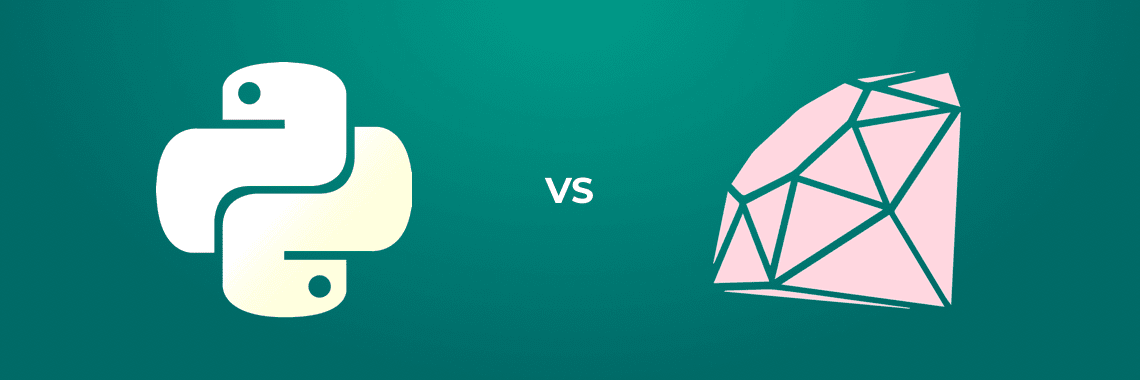
Software developers often favor Ruby considering it rather a work of art and even a joy. For instance, OOP with Ruby means that they can call methods on objects, define their own methods, and rewrite methods as they please — that is the power of the language. But the thing is that Python is more popular. It merely can make a programmer more employable in 2019. There are more Python users and more Python developers right now.
Both languages can boast having a clean syntax but Python as a language is much more predictable. Everything works and looks the way they are supposed to. And when they do not, it is easily noticeable where and what has gone wrong. Ruby’s syntax is laxer but the interpreter pulls in the slack every time you miswrite a line and delivers the expected result. Anyway, these two languages have many similarities and are both easy to learn. Given the multitude of resources, it is relatively easy to develop in Ruby on Rails. Yet, Ruby has less widespread adoption outside of the Rails community and it is advised to become moderately good at another language first and then try Ruby. Alternatively, there are a lot of instructional materials based around Python, the language that is broadly adopted in a wider variety of fields. Thus, Data Analytics for building Machine Learning models, for example, is something that cannot be done without Python.
Python disadvantages
All programming languages have their imperfections. Despite all the good that Python as a programming language offers, there are shortcomings to make do:
Speed as of an interpreted language. The good news is that this drawback is fixable with the rise of PyPy promising the performance boost.
Python’s dynamism prevents catching semantic errors upfront. But tools like PyChecker can check for errors that a compiler in languages like C or Java would do.
Threading is less performant in Python than in other languages. The multithreading can get possible with Jython but immutability is not too important in Python, so single-threaded concurrency works fine.
Dependence on third-party libraries and frameworks. There are quite a number of widely used third-party resources that are not essentially Pythonic. This actually contradicts the Python motto.
Why Python is popular
Every language is designed in such a way to offer something special that its users will be able to benefit from. This paradigm defines what programming with Python is. One way or another, Python will not take the place of low-level languages allowing users to acquire better control over a CPU like C or C++. Nor will it take over Java that is in demand because of its availability for building complex apps, or JavaScript standing behind most web pages. However, its comparison to C#, PHP, and Ruby is fairer — by doing so, we undertake a direct, side-by-side comparison of corresponding parameters. And the advantages of Python that we point out analyzing the options showcase what is the reason for Python’s popularity. We encourage you to experience it yourself!
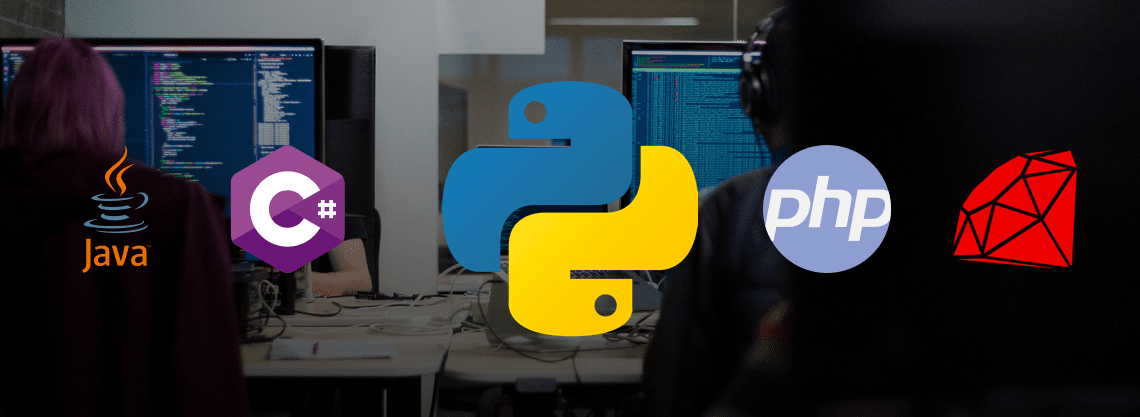
© 2019, Vilmate LLC




